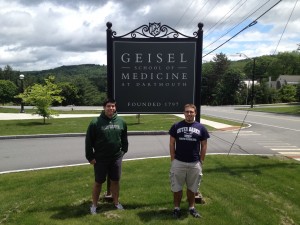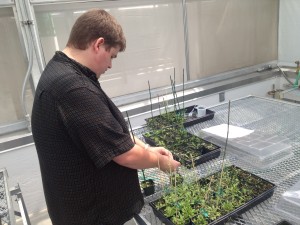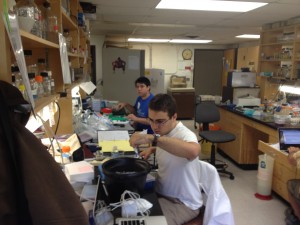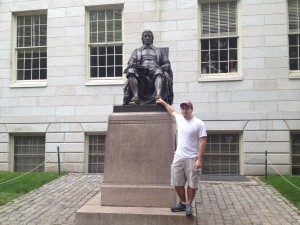by Drake Bishop ’14, Alan Fish ’14, and Christian Lehman ’14:
This summer we worked on research projects at Dartmouth’s Geisel School of Medicine in Hanover, New Hampshire (recently named in honor of Theodor “Dr. Seuss” Geisel, Dartmouth 1925). We worked on these projects with Dr. Mike Wolyniak from H-SC while the facilities and lab we worked in were that of Dr. Chuck Cole of the medical school’s Biochemistry and Genetics Department. This lab had many of its own projects with other undergraduate students from Dartmouth College, a postdoctoral researcher and a lab manager, all of whom were good company and helpful on several occasions.
One major project we worked on involved plant genetics with Arebisopsis thaliana. The project is part of a collaboration sponsored by the National Science Foundation (NSF). The consortium is with three other schools across the country: Barnard College of New York, the College of Charleston of South Carolina, and the University of Georgia. Our H-SC group is part of the collaborative’s genotype group. Our goal is extract DNA from different strains of Arabidopsis thaliana grown by the collaborative then quantify the number of inserts of T-DNA in each sample. The information we compile about each sample, of which there are thousands, will help lead to a standardized database of which strains could be used for certain genetic modeling research. Our day to day work consisted of grinding up leaf samples and extracting usable DNA, running PCR reactions to exponentially multiply the amount of extracted DNA. We then run gel electrophoresis on the samples to separate the extracted DNA in to 500 and 600 base pair bands, the first band being our standard and the second band being what we observe and quantify. To quantify the band we take a photo of the using a UV camera and then a computer program to assign a value to the brightness of the band. We have also run quantitative PCR reactions on select samples to verify out results and have started growing about 80 additional plants for later study.
In a separate project, we worked with some strains of yeast with point mutations in the brr-6 gene, which has been theorized to affect changes in the nucleus and cell division. We wanted to observe and study mitotic malfunctions in these mutated strains of cells. We have also begun work on some new crosses of yeast which also include mutations of the brr-6 gene and which have tubulin labeled with GFP. This will allow us to look at the way microtubules behave in cells with the brr6-1 mutation.
There was also plenty to do outside of the lab in Hanover, where the college and medical school resides, and the neighboring towns. There were lectures by post docs, art galleries, and Dartmouth’s Hood Museum along with the rest of the campus to explore. The college’s proximity to the city of Boston also allowed us a couple of day trips to explore the city’s rich history and food.






